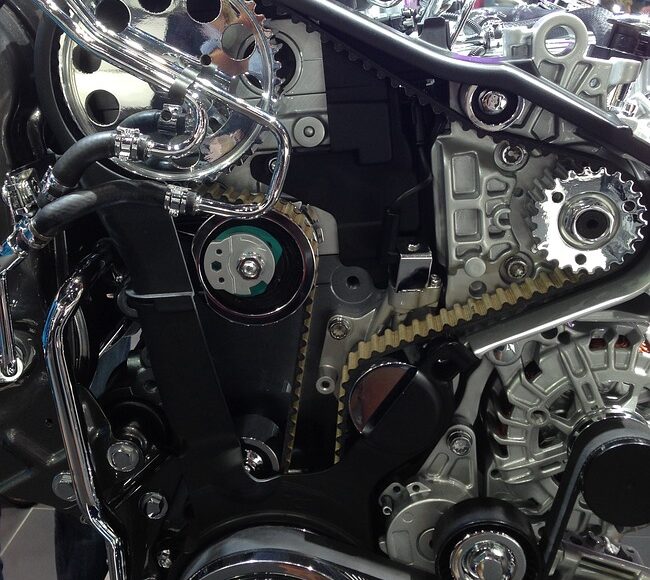- July 30, 2019
- By Park Muffler
- In Belts, Blog
What Is a Timing Belt? Signs of Failure & When to Replace It

Also known as a timing chain or a cambelt, your vehicle’s timing belt is a part of the engine that synchronizes the rotation of the crankshaft and the camshaft. It ensures that the engine’s valves open and close at the proper times during the intake and exhaust strokes.
A broken or damaged timing belt can cause serious damage to your vehicle and its engine. Knowing how to inspect your timing belt and when to change it is crucial to the well being of your vehicle.
The Crankshaft and the Camshaft
The timing belt is an integral component of the operation of the crankshaft and camshaft. The crankshaft is the part of the engine that converts linear energy into rotational energy by changing the up and down motion of the pistons into a circular motion. This enables the wheels to drive the vehicle forward.
The camshaft works to open and close the inlet and exhaust valves of the engine. The timing belt ensures that the movements caused by the crankshaft and the camshaft are timed perfectly.
Damaged or Broken Timing Belt
The timing belt is one aspect of your vehicle you cannot ignore if damaged. A broken timing belt can cause the valves in your engine to bend or break. It can also cause damage to the pistons or destroy the cylinder head and block.
The effects of a broken timing belt can be catastrophic to your engine and costly. If you are experiencing any symptoms of a bad timing belt, it is crucial to have the issues remedied immediately.
Symptoms of a Bad Timing Belt
If your timing belt is wearing down and reaching the end of its lifespan, you notice some particular signs.
Oil leaks and engine misfires may indicate that your timing belt is damaged. The engine not turning over is a potential sign as well.
A ticking noise coming from the area of your engine may indicate that your timing belt is wearing out and should be replaced soon. It’s important to regularly inspect your belt for any wear and tear.
Checking the Timing Belt
The timing belt is usually located on the end of the engine under a small plastic or metal cover. This cover is held in place by bolts or clips.
In order to access your timing belt, undo the bolts and clips to remove the cover. From there you can do a visual inspection of the timing belt.
The timing belt is a rubber belt that looks like a large elastic band that feature “teeth” on the inside surface. These teeth are crucial to ensuring the belt grips and does not slide off. Without the teeth, the belt could become dislodged in another moving part.
Look for any cracks on the belt itself as well as any contaminates or materials that may affect the belt’s performance. Check the underside of the belt to make sure the teeth are in good condition.
Push down lightly on the belt to check the tension. If it moves more than half an inch, the tension is too loose and the belt needs to.be tightened or replaced.
It’s important to know the recommended maintenance interval of the timing belt as per your vehicle’s manual. Be sure to have the belt replaced according to the recommendations.
If you have any questions about your vehicle’s timing belt, feel free to contact Park Muffler today! We would be more than happy to help determine the condition of your timing belt.
Proudly Canadian owned and operated
© Park Muffler - All Rights Reserved.

